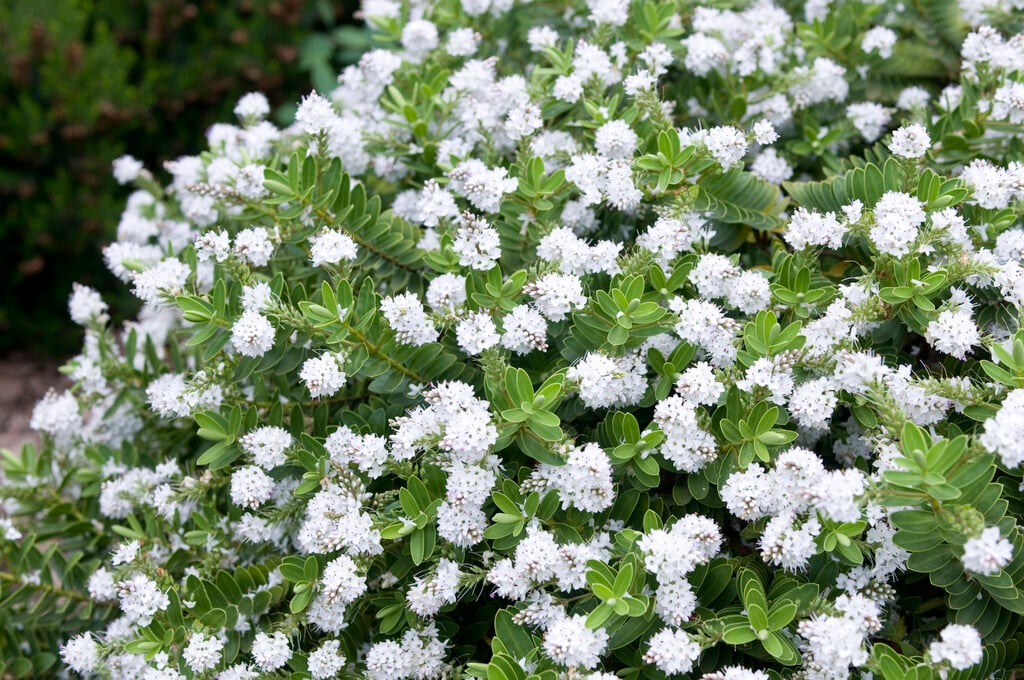Veronica brachysiphon (H)
short tubed hebe
A compact evergreen shrub to a height of 1m, so ideal for a short hedge. The small leathery leaves are mid-green with slightly lighter margins. In summer a profusion of pure white flowers in small racemes appear
Size
Ultimate height
0.5–1 metresTime to ultimate height
5–10 yearsUltimate spread
0.5–1 metresGrowing conditions
Moisture
Well–drained, Moist but well–drainedpH
Acid, Alkaline, NeutralColour & scent
| Stem | Flower | Foliage | Fruit | |
| Spring | Green | |||
|---|---|---|---|---|
| Summer | White | Green | ||
| Autumn | Green | |||
| Winter | Green |
Position
- Full sun
- Partial shade
Aspect
South–facing or West–facing or East–facing or North–facing
Exposure
ShelteredDrought resistance
Yes Hardiness
H5Botanical details
- Family
- Plantaginaceae
- Native to GB / Ireland
- No
- Foliage
- Evergreen
- Habit
- Bushy
- Genus
Veronica can be annuals, perennials or sub-shrubs with paired leaves and small flowers usually in terminal or axillary racemes or spikes
- Name status
Correct
- Plant range
- New Zealand
How to grow
Cultivation
Grows well in poor to moderately fertile soil in sun or partials shade with protection from cold, drying winds.
Propagation
Propagate by seed sown in containers in a cold frame as soon as ripe. Root semi-hardwood cuttings in late summer or autumn with added bottom heat
Suggested planting locations and garden types
- City and courtyard gardens
- Cottage and informal garden
- Gravel garden
- Mediterranean climate plants
- Wildlife gardens
- Low Maintenance
- Flower borders and beds
- Hedging and screens
Pruning
Pests
May be susceptible to aphids
Diseases
High Risk Host for Xylella fastidiosa. May be susceptible to downy mildews, fungal leaf spot, fungal rot, Phytophthora and sometimes honey fungus
Love gardening
Sign up to receive regular gardening tips, inspiration, offers and more
View our Privacy Policy
Get involved
The Royal Horticultural Society is the UK’s leading gardening charity. We aim to enrich everyone’s life through plants, and make the UK a greener and more beautiful place.

.jpg)